Few materials can withstand extreme heat as well as graphite. Used in aerospace and metallurgy, graphite has remarkable properties which makes it essential in those industries. So, why can this form of carbon tolerate such high temperatures? In this article, we will examine the reason for graphite’s exceptional resistance to heat and the anatomy alongside the physical features that makes it vital for high-temperature applications. If you want to learn about advanced materials or you love science, this exploration of the melting point of graphite will teach you a lot about these incredible materials provided by nature.
Why Does Graphite Have a High Melting Point?
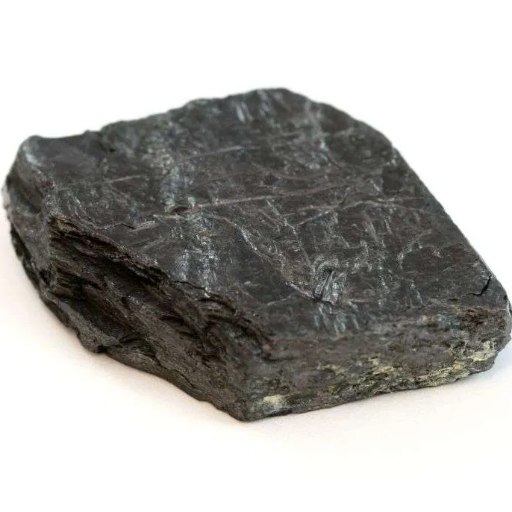
The remarkable melting point of graphite can be attributed to its unmatched covalent bonds and atomic structure. Each carbon atom in graphite is bonded to three other carbon atoms in a hexagonal formation which creates planar layers. The bonds within each layer are very strong, requiring significant energy to break, though the weaker forces that hold the layers together permit sliding, resulting in a layered form. Because of the great in-plane covalent bonding that exists within layers, it is possible for graphite to endure extremely high temperatures without melting.
Understanding the Structure of Covalent Bonds in Graphite
The unique properties of graphite stem from the covalent bond structure that each layer possesses. In graphite, each carbon atom forms three strong covalent bonds with neighboring carbon atoms which are further arranged in a hexagonal lattice. This structure leaves one electron from each carbon atom available, which helps enhance graphite’s electrical conductivity. Due to sp2 hybridization, these carbon atoms are arranged into a planar structure, resulting in significant mechanical strength in the planes.
Recent studies show that the bond length between two carbon atoms in graphite is roughly 0.142 nanometers, further establishing the stability of the hexagonal layers. These layers are arranged in an ABAB order and are held together by van der Waals forces which are much weaker than the covalent bonds within the layer. This difference in bonding makes it possible for the layers to slide over one another, which is a feature of lubricating graphite.
Further exploration suggests that the energy needed to break the covalent bonds within the layers is about 348 kJ/mol. This explains why graphite is thermally stable and why it’s used in high-temperature industries like refractories and electrodes. The interplay between strong covalent bonds within the layers and the weak interlayer bonds continues to make graphite a material of great scientific and industrial value.
The Function of Carbon Atoms in Graphite
Per graphite’s structure and its properties, they emerge as a consequence of the carbon atoms’ behavior which are found in a hexagonal lattice structure as planar layers. Each layer comprises carbon atoms that are covalently bonded to three neighboring carbon atoms forming a strong and stable network of sp2 hybridized covalent bonds within the layer. Due to this bonding, the 4th valence electron of every carbon atom can be part of a cloud of 𝜋 electrons that is shared throughout the layer and thus, graphite has exceptional conductivity.
The conductive properties are derived from the layers constituting the graphite. The layers are held together by weak van der Waals forces which enable sliding over each other with ease. This is graphite’s lubricating property which is applied in tools like pencils. Recently discovered data shows inter layer spacing in graphite has around 0.335 nanometers which indicates very weak bonds between the layers.
In addition, more detailed studies have been conducted highlighting that the carbon atoms in graphite have thermal conductivity properties of almost 2000 W/m·K in the basal plane of the material. This value is one of the highest encountered in nature and is the reason why graphite is widely used for heat management operations in batteries and other advanced electronic devices. The sheer degree of scientific inquiry into the carbon atoms of graphite and their ability to serve as an essential building block in the advancing technologies of energy storage devices makes it a remarkable modern material.
Comparison with Diamond and its Melting Point
Graphite and diamond differ in thermal conductivity, structural arrangement, hardness, and melting point, with diamond having a significantly higher melting point under extreme pressure.
| Key Point | Graphite | Diamond |
|---|---|---|
| Structure | Layered | Tetrahedral |
| Hardness | Soft | Very hard |
| Conductivity | High (basal) | High |
| Melting Point | ~3900 K | ~4700 K (high pressure) |
What Happens to Graphite at Its Melting Point?
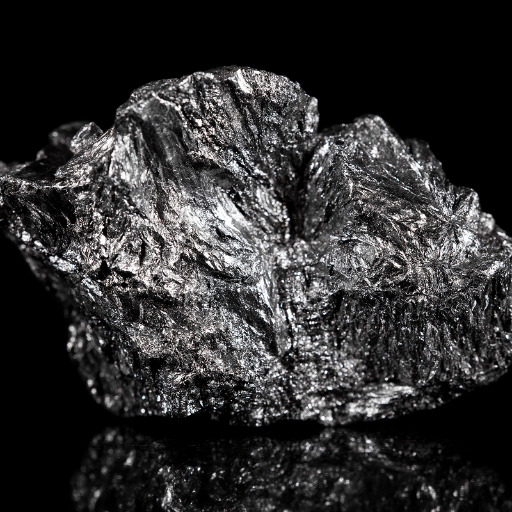
Like many substances, graphite transitions from a solid to a liquid, in this case at an extreme temperature of about 3900 K. Unlike most substances, graphite tends to sublimate instead of melt; it goes straight from solid form to gas. This phenomenon is a result of its atomic structure. This happens at normal atmospheric pressure, which means that the melting process is difficult to study without high-pressure environments.
Analyzing Graphite’s Phase Diagram
Graphite’s phase diagram shows its complex changes with respect to pressure and temperature. At normal atmospheric pressure, graphite will sublimate at around 3900 K without going through a liquid phase. Under extremely high pressures, however, graphite will undergo melting into liquid phase. Recent research suggests that the triple point of graphite, where solid, liquid, and gas phases exist simultaneously, is thought to be around 100 MPa (roughly 1000 times atmospheric pressure) and over 4500 K.
At a pressure of approximately 10 GPa, near 5000-6000 K graphite shifts to liquid form. This behavior is crucial in high-pressure research and industrial applications, especially in processes aimed toward creating synthetic diamonds. Moreover, with the use of diamond anvil cells, these extreme conditions have been replicated, confirming the phase transitions in graphite with precision.
Improves understanding of the thermodynamic properties of graphite greatly shifts the markers in material science.
Does Graphite Sublimate Or Melt?
Under paving atmospheric pressure, graphite does not exhibit the conventional melting point. In fact, it rather sublimates at about 3725°C (6737°F). Recent studies point toward the presence of liquid graphite when subjected to pressure beyond 10 GPa and temperature over 4300 K.
This frame of mind alters concepts regarding high-pressure research and industrial applications.
The phase diagram depicting graphite marks its transitions more distinctly. It shows well-defined melting points under high-pressure conditions, but at atmospheric pressure, solid-to-liquid transitions do not occur. This illustrates the intricate puzzlement of carbon and underscores the need for meticulous measurements. Such information continues to be foundational in broadening our understanding of advanced carbon materials and their potential uses.
Lattice Structure Under High Temperatures
The lattice structure of graphite experiences notable shifts with increases in temperature. Graphite has a layered hexagonal structure in which covalent bonds are strong within each layer, while between the layers, only van der Waals bonds exist which are weak. These bonds are covalent in nature and at high-temperature, layer-wise bond weakening facilitates movement. Studies show that graphitic layers can disorder above 2500°C, which in turn affects its electrical and mechanical behavior.
For example, experimental results suggest that near sublimation temperatures (around 3900°C under normal pressure), graphite’s lattice structure partially decompresses and shifts towards a gaseous carbon state. HT-XRD results confirm lattice parameter increments (a small increase in interlayer distance) due to thermal expansion while rigid structural damping up to 3000°C.
Tech moderators have verified these studies with advanced computing, showing that temperature effects are anisotropically thermostatic where in plane bonding stays strong, but interlayer interactions weaken. This is especially useful in the aerospace and nuclear energy industries, which use graphite under extreme temperatures. Further, specific phase diagrams provide more evidence on the need for performance oriented carbon materials in harsh conditions.
How Do Pressure and Temperature Affect Graphite?
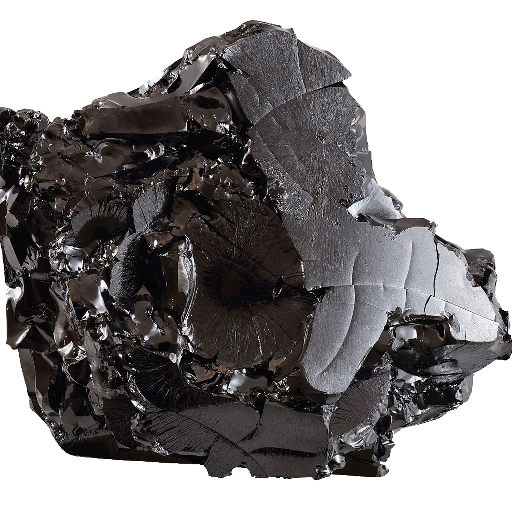
The structural and physical characteristics of graphite change under pressure and temperature conditions. Graphite may transform into a diamond, which is denser and a harder carbon form, under high pressure and temperature. Thermal expansion occurs at elevated temperatures, especially within layers, while interlayer bonds grow weaker. These changes coupled with the environment greatly influence thermal stability, strength, conductivity, and graphite performance.
Impact of High Pressure on Graphite
The application of high pressure results in alteration of operational and structural features of graphite. At around 15 GPa of pressure and 1200-1500 °C temperature, graphite can turn into diamond using HPHT (high-pressure high temperature) synthesis method. The change in structure occurs as the layered hexagonal structure of graphite shrinks isothermally to diamond superlattices, resulting in one of the hardest materials known.
Cold pressed graphite technology shows a lack of heat dissipation along its layers with the interconnected structure becoming more compact at 10 to 15 GPa pressure. Under this compression phonon modes also vibrational properties that can be measured using Raman Spectrsocopy demonstrate significant change in graphite’s phonon modes. An example of this is the Raman G-band which shifts under pressure demonstrating alteration of the materials bonding environment.
In addition graphite exhibits what is known as pseudo-elasticity in that its structure behaves as though within a elastic limit and so temporarily compresses and the reverse happens when pressure is gradual unloaded. The pseudo-elastic limit is believed to be highly useful when working with superhard materials and trace phases carbon undergoes.
The above statements confirm that graphite is influenced by prolonged periods of pressure creating possibilities for new material science setups including production of new carbon based materials.
Influence of Atmospheric Pressure on Graphite’s Behavior
The impact of atmospheric pressure cannot be understated with regards to graphite. Under normal atmospheric conditions (1 atm), graphite is a stable hexagonal crystalline solid known for its remarkable lubricating and conducting properties. Nevertheless, certain changes in pressure can lead to drastic changes in atomic structure. For instance, it is known that when pressure exceeds 15 GPa graphite begins to transform into a hexagonal diamond (lonsdaleite) structure which is equally if not more hard than a diamond.
Furthermore, low temp studies under variable atmospheric pressure show that graphite compresses anisotropically with compressive ratios along c axis (perp to layer) reaching 10% under extreme conditions. This change in structure affects its conductivity as well as mechanical strength and makes it very appealing for high-tech applications like in advanced sensors or wear resistant coatings. Such critical materials are of particular interest when looked-for to fulfill stringent design requirements. Advanced computational techniques have also shown that these phase changes can be more easily attained at elevated temperatures which allow lower pressure thresholds to facilitate such transformations.
The adjustments made to graphite along with the atmospheric pressure serve to enhance our understanding of the material, especially in terms of breakthroughs in the material science industry. Because of the advancements being made to experimental techniques, there is an ever-expanding understanding of the revolting possibilities that graphite holds.
Changes In Properties Based On Temperature
Temperatures changing plays a critical role in altering a graphites structure and functional properties as well. We know that at a certain point, graphite can have greater electrical conductivity because electrons within the crystalline structure can move more freely. Some studies have shown that graphite is thermally stable to nearly 3000°C under vacuum conditions which is one of that materials most heat resistant known.
Also, graphite above the 2000°C mark goes through a reorder cycle in which is reduces defects in the layers, therefore, increasing the mechanical strength. This makes high-temperatures treated graphite favored in places like nuclear reactors where strength and resistance to high temperatures is necessary.
Recent research also emphasizes the anisotropic thermal expansion behavior of graphite, which is comparatively lower than other materials. As noted, the thermal expansion coefficient of graphite is about 4–8 × 10^-6 K^-1 between 300 to 600 K. This property allows graphite to maintain его structural integrity under differing thermal stresses, making it useful in aerospace and electronics industries.
Enhanced experimental design along with temperature-focused computational simulations is helping researchers understand the effects of temperature on graphite, enabling novel applications throughout scientific and industrial landscapes. Other modifications continue to be explored, including the performance-enhancing doping of other thermal elements to graphite.
How Does the Melting Point of Graphite Compare to Other Allotropes of Carbon?
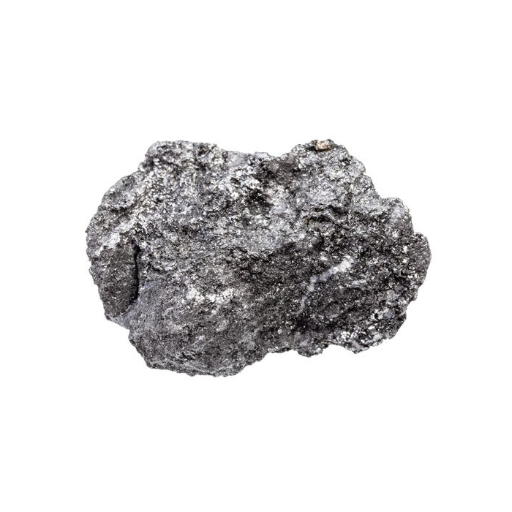
The melting point of graphite, which is one of the allotropic forms of carbon, is roughly 3,600 °C (6,512 °F) making it one of the highest melting points of any material. In comparison, diamonds only sublimate, transition from a solid to a gas, at approximately 3,500 °C (6,332 °F) without going through the melting phase. The high covalent bond strength through which the atoms join together in the graphite lattice gives its layered structure thermal stability, therefore, making graphite ideal in applications that require materials exposed to very high temperatures.
Differentiating Graphite And Diamonds
Although both formed from pure carbon, graphite and diamonds had entirely different characteristics because of the difference in their atomic structure. Graphite is made up of layers of carbon atoms arranged in hexagons which are bonded together with weak van der Waals forces, resulting in the layered structure of graphite. This unique formation not only gives graphite its lubricative properties, but also its electrical conductivity. New data suggests that graphite has an impressive conductivity of around 100 S/cm, making it perfect for electrodes and as a coating.
In contrast, diamonds have an inflexible three-dimensional tetrahedral lattice structure which makes them extremely rigid and thermally conductive at about 2000 W/(m·K). Recent research suggests they are the hardest natural material at a 10 on the Mohs scale and withstanding over 60 GPa of pressure. Unlike graphite, diamonds do not conduct electricity due to the absence of freely-bonded electrons and thus serve as electrical insulators.
Moreover, more recent advancements in artificial production techniques, like chemical vapor deposition (CVD), have allowed for the production of artificial diamonds and advanced graphite compounds. These techniques enables scientists to modify the properties of these carbon allotropes for tailored industrial purposes, from electronics and cutting tools to heat-dissipation systems.
Exploring Graphite and Liquid Carbon
Another well-known allotrope of carbon is graphite, which consists of carbon atoms arranged in a hexagonal lattice structure, layered like a cake. The layers are joined by weak van Der Waals forces which enable them to slide over each other, lubricant like in texture. As a result of this structural characteristic, graphite is a good electrical conductor. As sutdied recently, natural graphite production in China reached approximately 1.3 million metric tons in 2022. China being the leading producer accounted for over 65% of global output.
Liquid carbon is an exotic type of carbon that forms under conditions of extreme heat and pressure. It is not commonly found in nature, but rather exists in experimental conditions. Scientists believe that understanding liquid carbon as a transient phase helps comprehend the behavior of carbon materials at high energy densities, such as in diamond synthesis or in planetary interiors. The development of new spectroscopic techniques allows scientists to track the degree of transition between solid, liquid, and gas phases of carbon, thus improving our understanding of the behavior of materials under harsh conditions. These works can inspire novel ideas in material engineering and dynamic performance technologies.
Understanding Differences with Amorphous Carbon
Amorphous carbon, unlike diamond or graphite, does not have long-range ordered symmetry and thus has different properties and uses. While diamond features a tetrahedral crystal lattice and graphite has a hexagonal layered silicate structure, amorphous carbon is a mixture of randomly oriented clusters made up of sp2 and sp3 hybridized bonds. This unique structure provides mechanical strength, chemical resistance, electrical conductivity, and the ability to be modified by changing the ratio of hybridization.
For example, the amorphous carbon electric conductance differs with the quantity of sp² carbon present. There are low concentrations of sp2 bonds which acts like insulation. Sp2 bonds increasing allow for greater conductance making it usable for modern electronics. Furthermore, data indicates that amorphous carbon has a hardness of about 2 to 10 GPa which is a range dependent on the deposition method like Physical Vapor Deposition (PVD) or Chemical Vapor Deposition (CVD). This makes it possible to utilize in wear-resistant coatings for tools or biomedical implants.
Breakthroughs in electron microscopy and spectroscopy in the recent years have shed light on the atomic structure of amorphous carbon. As an instance, Raman spectroscopy reveals the disorder present in sp2 clusters by measuring the D and G peaks that are synonymous with its spectrum emissions. These results have been imperative in differentiating amorphous carbon from other carbon compounds, enabling industrial applications including, but not limited to, thin films, tribological coatings, and electrochemical capacitors (supercapacitors).
Key sectors have been inspired by the amazing properties of amorphous carbon. Studies of the anodes in lithium-ion batteries showed that applying amorphous carbon coatings increased charge discharge cycling stability and capacity retention. This reinforces the promise of amorphous carbon as a next generation material for the energy and technology sectors.
What Are the Industrial Applications of Graphite Due to Its High Melting Point?
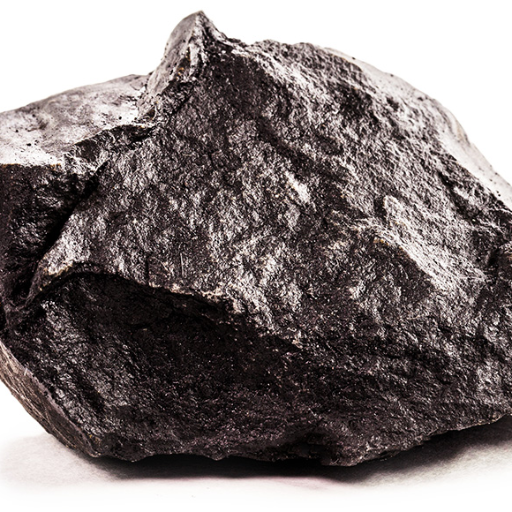
The high utility of graphite within industries that utilize extreme heat is due to its high melting point. It is used in refractories, including crucibles and molds for casting metals because they are stable under intense heat. Moreover, graphite is used as raw material in producing electrodes for electric furnaces which function at extremely high temperatures. Due to its thermal resistance, it is also appropriate as furnace linings and in heat exchangers. Clearly, graphite is of utmost importance within industrial processes that involve high temperatures.
Usage of Graphite as Refractory Material
Graphite’s unmatched chemical inertness as well as its excellent resistance to thermal shock has positioned it uniquely as a refractory material. Recent industry reports indicate that there is growth in global consumption of graphite for refractories due to increasing demands from advanced technologies, especially in steel manufacturing, foundries, and high temperature industrial sectors.
The World Steel Association indicates that refractory applications account for approximately 20-25% of the graphite market. This is primarily attributable to its property of enduring moderate thermal shock, scaling, and heat over 3,000 °C. More recent studies highlight the synthetic graphite advantage compared to natural graphite, which is its more uniform, pure, and versatile nature in different industrial processes.
In addition, the usage of graphite in modern refractories is leading to the creation of carbon-bonded refractories that retain their strength under extreme heats. With these innovations, graphite is sure to remain a core component in high-temperature applications, increasing productivity and lowering costs in the process.
The Role of Graphite in Electrodes
In my view, graphite is indispensable for electrodes because of its fantastic conductivity, high-temperature stability, and anti-corrosive properties. It is one of the most important materials in devices such as electric furnaces and in lithium-ion batteries because of their utility, especially in high demand scenarios.
Graphite As Lubricants In High Temperatures
In high-temperature environments, graphite lubricants are useful because of the way heat oxidizes graphite’s lamellar structure. This means sliding between the layers occurs with minimal friction, which is smooth, so it remains functional even when put in extreme heat environments. This property makes graphite invaluable in aerospace, automotive, and manufacturing industries. Recent studies indicate graphite lubricants are useful in extreme environments and functions well above 600 degrees Centigrade, which is a temperature where most conventional lubricants fail. Furthermore, graphite’s inert behavior under numerous conditions and is known to not oxidize also aids in reliability.
Research in the recent data systems indicates the demand for high temperature lubricants is projected to increase aggressively. A notable trend was specifically identified for the graphite lubricants which is expected to achieve roughly 5.3% compound annual growth rate (CAGR) from 2023-2030. This increase is driven by advancements in industrial machinery along with the need for effective “green” solutions in a myriad of other industries. Due to its overwhelming usefulness in solving lubrication concerns under extreme conditions, graphite is highly regarded as a versatile material.
Reference sources
- “Salt-template induced multistage porous graphite foam incorporating low melting point alloy for thermal management of high-power devices”(Guo et al., 2025)
- Publication Date: 2025-02-01 (Within the last 5 years)
- Methodology: This paper investigates the use of a salt-templating method to create a multistage porous graphite foam. A low melting point alloy is incorporated into this foam structure. The research focuses on the thermal management properties of the resulting composite material for high-power devices, not the melting point of graphite itself.
- Key Findings: The study likely demonstrates improved thermal conductivity and heat dissipation capabilities of the composite material, but does not directly address the melting point of graphite.
- “Synergistic phase change and heat conduction of low melting-point alloy microparticle additives in expanded graphite shape-stabilized organic phase change materials”(Zheng et al., 2024)
- Publication Date: 2024-01-01 (Within the last 5 years)
- Methodology: This research explores the synergistic effects of low melting-point alloy microparticles added to expanded graphite-stabilized organic phase change materials. The focus is on the combined phase change and heat conduction properties of the composite.
- Key Findings: The study likely shows improved thermal performance of the composite material due to the combined effects of the alloy and expanded graphite, but it does not directly measure or analyze the melting point of graphite.
- “Effect of crystallization behavior on wear properties of polytetrafluoroethylene composites modified by irradiation above melting point”(Wang et al., 2024)
- Publication Date: 2024-09-10 (Within the last 5 years)
- Methodology: This paper investigates the wear resistance of irradiated polytetrafluoroethylene (PTFE) composites, modified above the melting point. Graphite is used as a modifier in some of the composites. The study uses crystallization kinetics to analyze the crystalline structure of PTFE.
- Key Findings: The research demonstrates a significant increase in wear resistance for the modified PTFE composites, particularly those containing graphite. However, the focus is on the PTFE’s properties, not the graphite’s melting point.
Frequently Asked Questions (FAQs)
Q: What is the melting point of pure graphite?
A: Graphite will not melt under normal circumstances; rather, it will sublimate at roughly 3,600 °C. This means that it transforms straight from a solid to gas without passing through a liquid phase.
Q: In which ways does the molecular structure of graphite change the features the melting point?
A: The molecular structure of graphite, with its atoms arranged in layers, helps to explain the high temperature at which it sublimates. Its very high temperature of sublimation is explained by the strong covalent bonds which are difficult to sustain within the layered structure.
Q: Why is graphite able to conduct electricity, yet diamond is unable to?
A: Due to the presence of free moving electrons on the layers of graphite, it is able to conduct electricity. On the other hand, the molecular structure of diamond does not permit free movement of electrons, so it cannot conduct electricity.
Q: In graphite and diamond, do their thermal properties differ?
A: Indeed, as graphite and diamond are both allotropes of carbon, their thermal properties differ. Because of its layered structure, graphite has a greater thermal conductivity when compared to diamond, as it is easier for heat to pass through the woven structure.
Q: What role do admixtures in graphite play in its melting point?
A: Admixtures in graphite may influence its thermal characteristics, possibly reducing its sublimation point, in comparison to pure graphite which sublimates at a higher temperature.
Q: What is the comparison between artificial and natural graphite concerning the melting point?
A: Both artificial and natural graphite have just about the same sublimation points because artificial graphite does not lack bonding unlike natural graphite which carries impurities.
Q: What are Graphite’s Anisotropic Properties?
A: The characteristic features of graphite are remarkably anisotropic, which means that they differ based on the direction of measurement owing to the layered arrangement boasting differing electrical conductivity along with perpendicular to the layers.
Q: What are alpha and beta graphite and what are their property differences?
A: Alpha and beta graphite denote differing forms of structure. Hexagonal structures are known as alpha graphites while omega graphites are known to have rhombohedral structures. These slight differing structural shapes may cause differences in thermal and electrical characteristics.
Q: Do pressure conditions affect the sublimation point of graphite?
A: Graphite sublimation can be affected by pressure conditions, and it can melt graphite under higher pressure.

